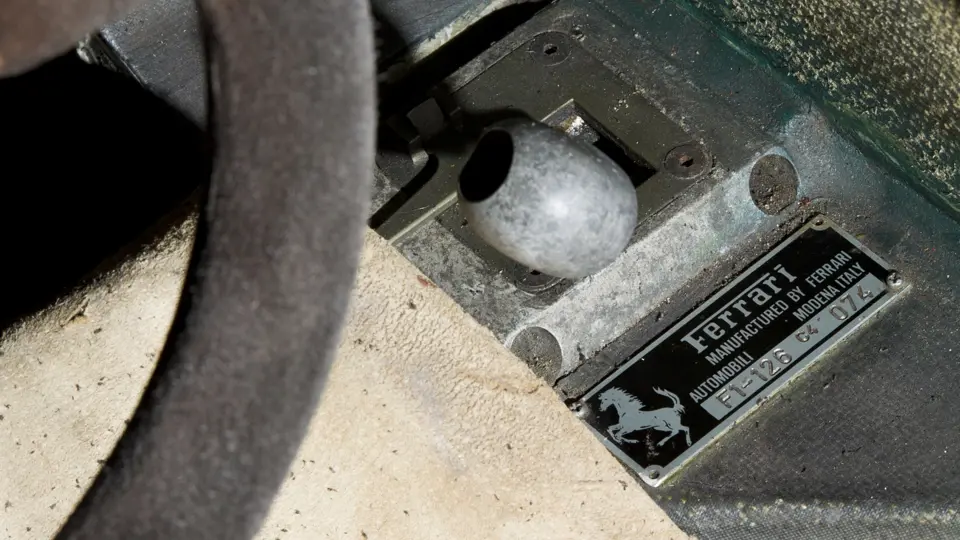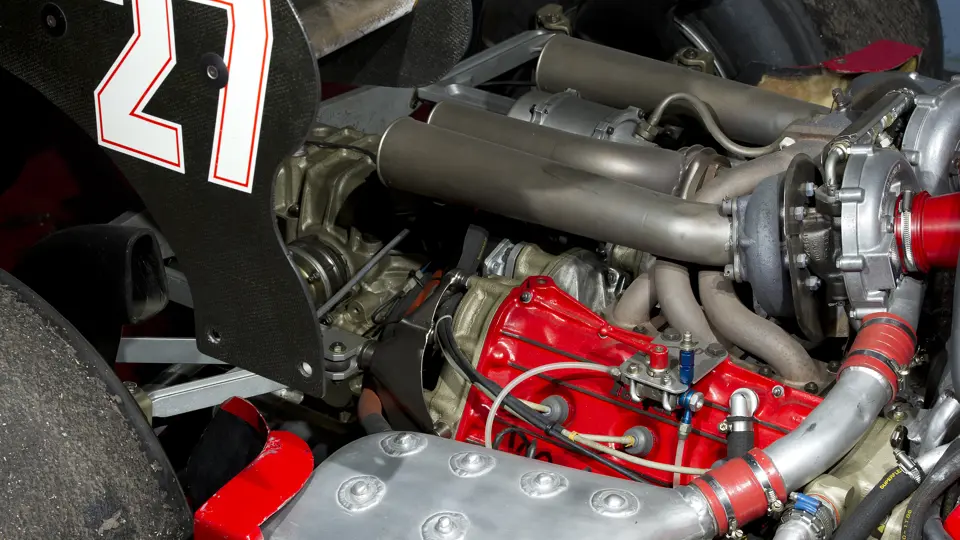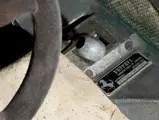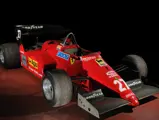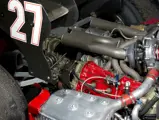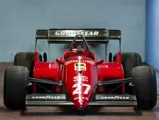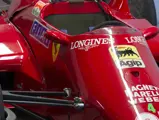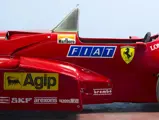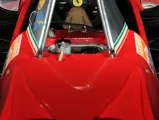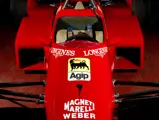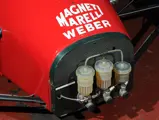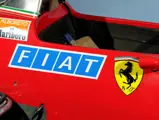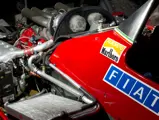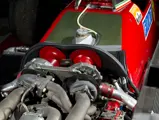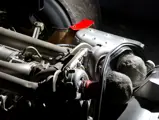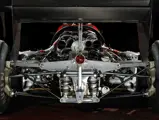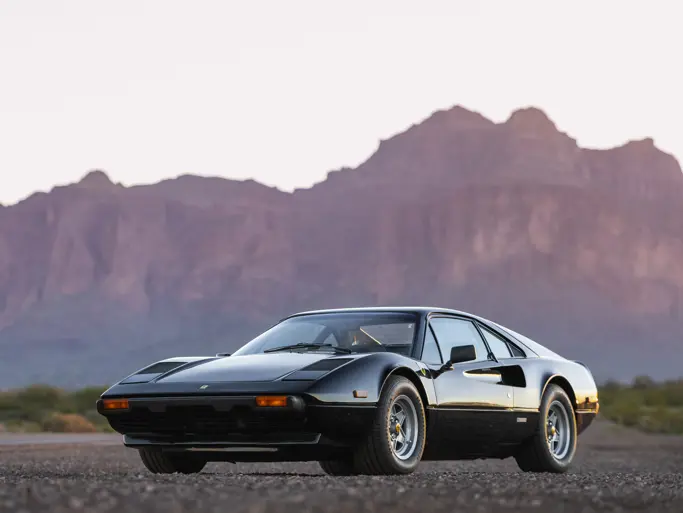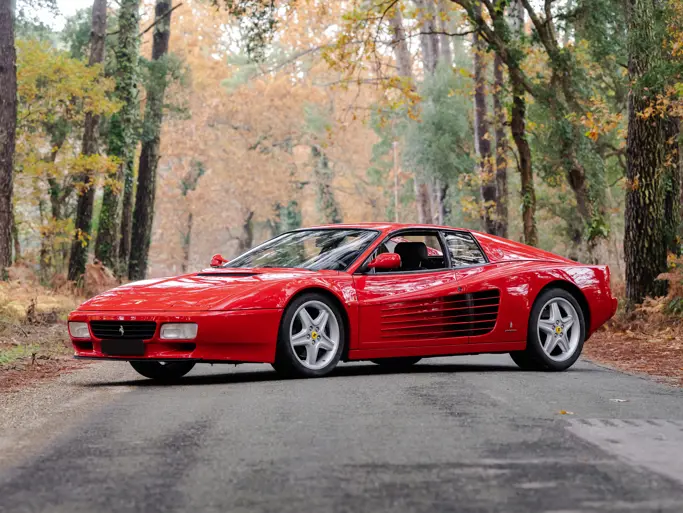Please note that should the buyer be a resident of the United States an additional duty of 2.5% is payable on the final sale price of the vehicle, including all applicable taxes and commissions.
(Est.) 600 bhp @ 12,200 rpm, 1,496 cc V-6 engine with dual overhead cams per cylinder bank, fuel injection, twin KKK turbochargers and twin intercoolers, transverse six-speed manual gearbox in rear transaxle, four-wheel independent suspension, and four-wheel hydraulic brakes.
- The Michele Alboreto/Rene Arnoux 1984 Scuderia Ferrari Formula 1 car
- Driven by Alboreto to victory in its first race at Zolder, Belgium
- Officially retired and stored by Ferrari in August 1984
- Restoration by Bob Houghton and MHT
During 1980, Ferrari engineers were busy with the development of the eventual replacement for the naturally aspirated flat-12 engine of the long-running 312 Formula 1 car. It was certainly worth the wait. The new 1.5-liter V-6 featured twin turbochargers with separate intercoolers, and upon its debut during the second day of practice for the 1980 Italian Grand Prix, its 580 bhp output produced lap times at the Imola circuit one-half second better than the proven 312 could muster.
While turbo V-6 development continued, a new chassis, designated 126 C, was prepared for it, utilizing Ferrari’s then-traditional tube-frame chassis and aluminum-sheet construction. Other than its remarkable power output and obvious potential, the new engine proved reliable, afforded more compact packaging and improved aerodynamics. Ferrari’s brilliant Canadian driver, Gilles Villeneuve, commanded the 126 C to its first win at Monaco in 1981, in only its sixth race outing, plus another victory in Spain.
The addition of Dr. Harvey Postlethwaite to the Ferrari engineering team resulted in the vastly improved 126 C2 of 1982, with its all-new carbon fiber-reinforced composite chassis, and handling was improved. However, Ferrari’s drivers, Villeneuve and Didier Pironi, proved to be an increasingly volatile combination and the polar opposite of Villeneuve and his former teammate and F1 World Champion, Jody Scheckter. Villeneuve’s fatal crash in May at Belgium's Zolder circuit and Pironi’s season-ending crash at Hockenheim were terrible blows, however, Patrick Tambay and Mario Andretti gathered sufficient points to earn the Constructor’s Championship for Ferrari.
For 1983, the controversial ground-effects skirts were banned, and since the new 126 C3 chassis was still undergoing development work at the season’s start, the C2 chassis was updated as the C2B with a new flat-bottom body configuration to meet the new rules. To compensate for the reduction in downforce, output of the turbo V-6 engine grew to 650 bhp for qualifying and 600 bhp for racing use. Despite the newly mandated aero restrictions, the “interim” C2B was faster than the prior ground-effects car. In the skilled hands of René Arnoux and Patrick Tambay, with Arnoux winning in Canada, Germany and Holland while Tambay scored victory at Imola, Ferrari scored its second consecutive Constructor’s Championship.
For 1984, Ferrari’s 126 C4 chassis was little changed, but its engine was revised considerably. Among the changes were completely redesigned cylinder heads, a deepened crankcase and many other internal modifications. The transverse-mounted gearbox was heavily improved as well, with the resulting six-speed unit stronger and lighter than before.
For the 1984 season, six 126 C4 chassis were completed, ranging from numbers 126-071 to 126-076. The Ferrari offered here, chassis 126-074, was built especially for new Ferrari driver Michele Alboreto, the rising star who joined Ferrari from Benetton-Tyrrell. The pairing proved effective, with Alboreto scoring victory in the car’s debut at the Belgian Grand Prix at Zolder on April 29, 1984, followed by five more starts. Arnoux also drove 126-074 at Hockenheim and Zeltweg, and it served as a back-up and practice car at Montreal, Detroit and Dallas. In August 1984, 126-074 was officially retired and stored at the Ferrari Factory.
Racing History, Chassis 126-074
- Belgian Grand Prix (Zolder) – Alboreto, 1st
- San Marino Grand Prix (Imola) – Alboreto, DNF
- French Grand Prix (Dijon) – Alboreto, DNF
- USA Grand Prix (Detroit) – DNF
- German Grand Prix (Hockenheim) – Arnoux, 6th
- Austrian Grand Prix (Zeltweg) – Arnoux, 7th
- Grand Prix of Europe (Nürburgring) – Alboreto, 2nd
- Portugal Grand Prix (Estoril) – Alboreto, 4th
Later, Chassis 126-074 passed through Cornes Motors Ltd. in Japan to the famous Matsuda Collection, and then during the late 1990s, it was imported into the United States where it was first stored for about five years. In 1998, the car was under the ownership of California’s Peter Irlenborn. Subsequently, 126-074 was given a complete, nut-and-bolt restoration by Bob Houghton and MHT of Gloucestershire, England, and it is known to have been in the noted collection of Mr. Abba Kogan until early 2007. While in its current ownership, the car has covered very little mileage and has been driven in demonstration runs.
Expertly restored and driven by two of the greatest F1 drivers of the 1980s, chassis 126-074 represents not only a chance to own a Ferrari with racing pedigree but a true, race-winning example of the famous turbo era in grand prix racing.

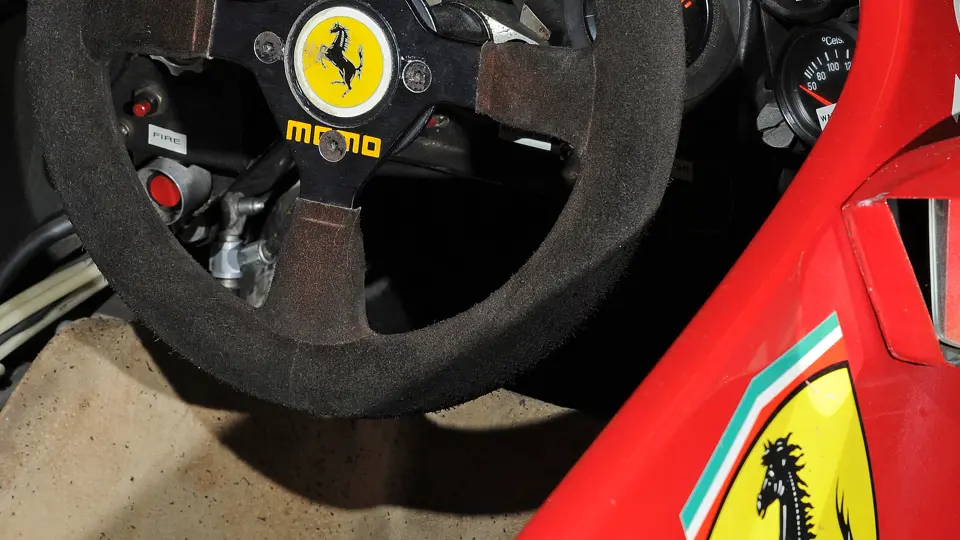


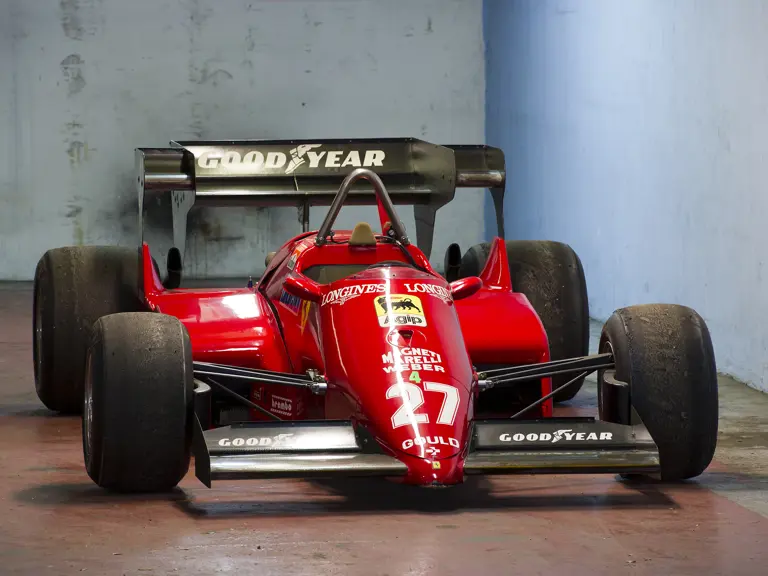
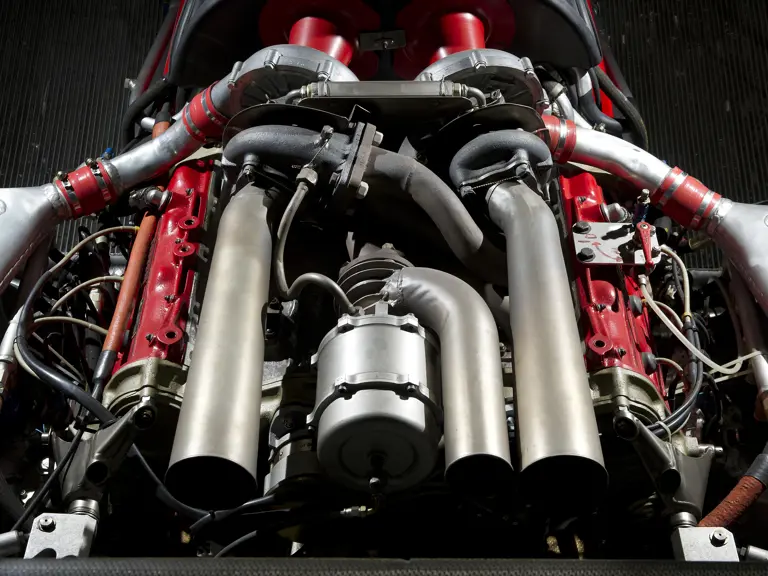
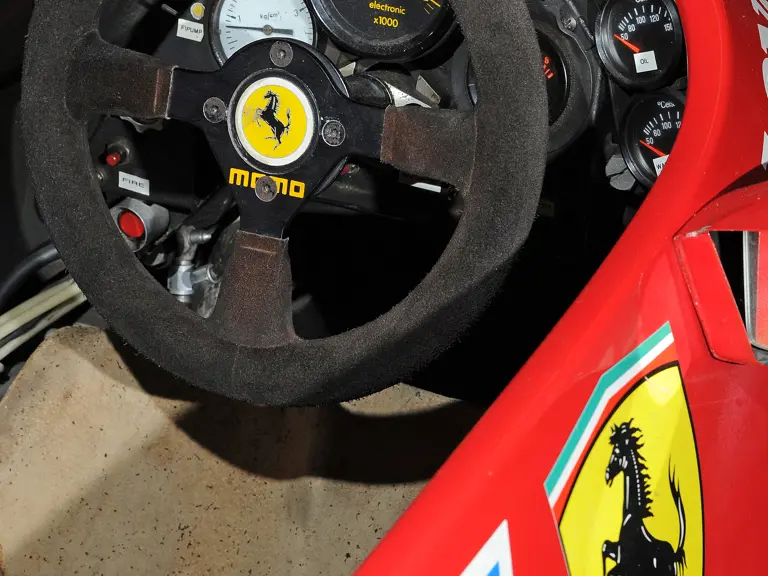
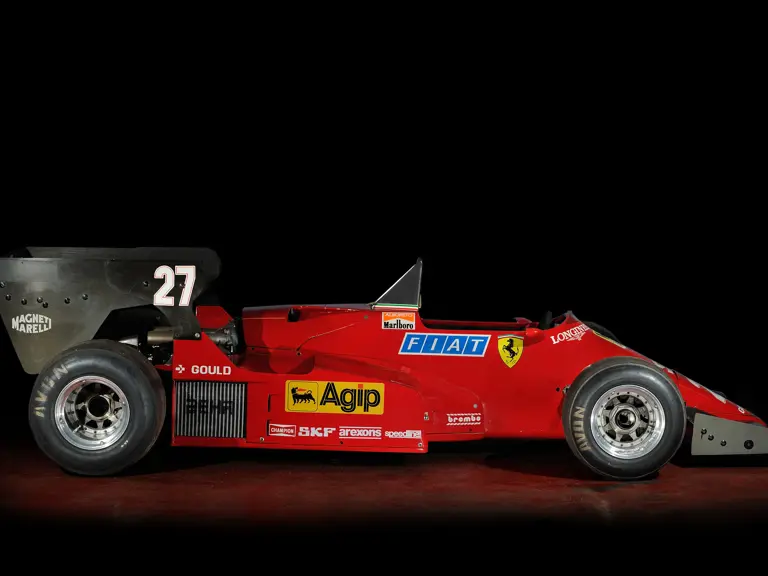

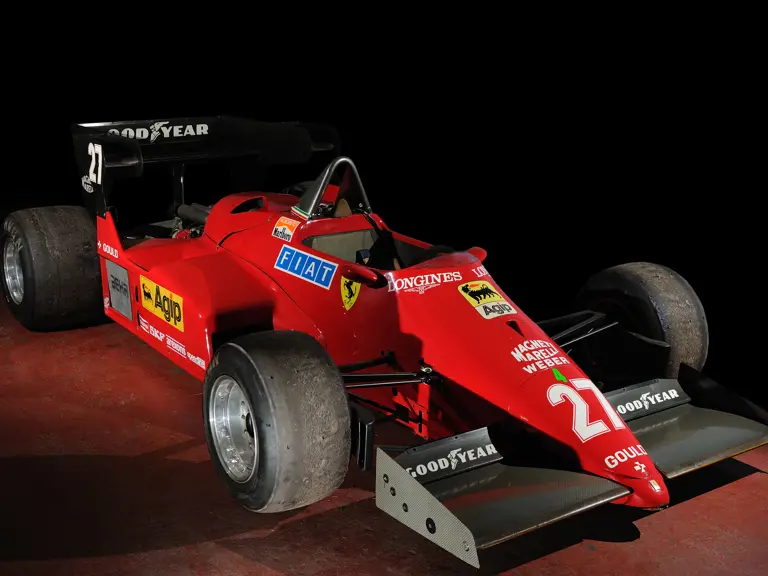

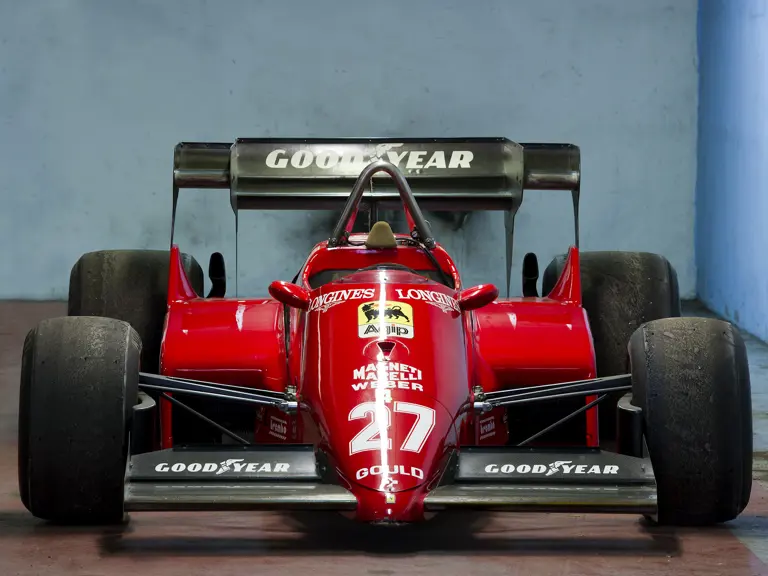

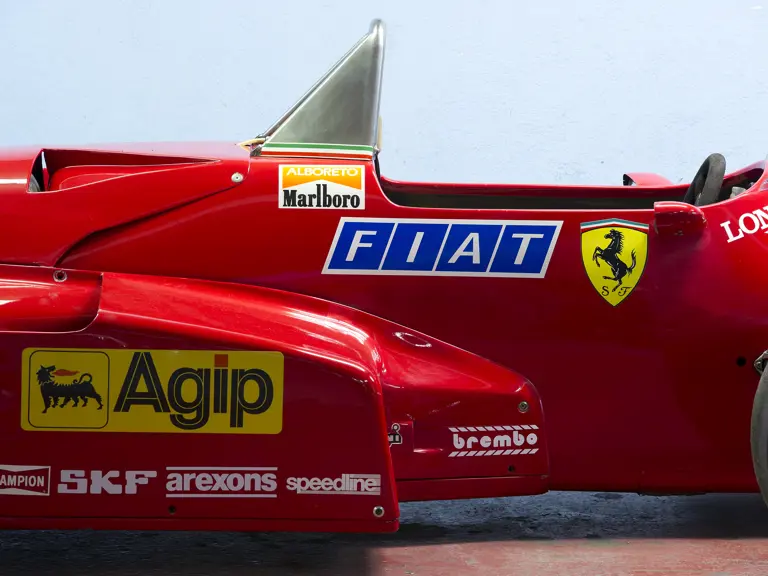
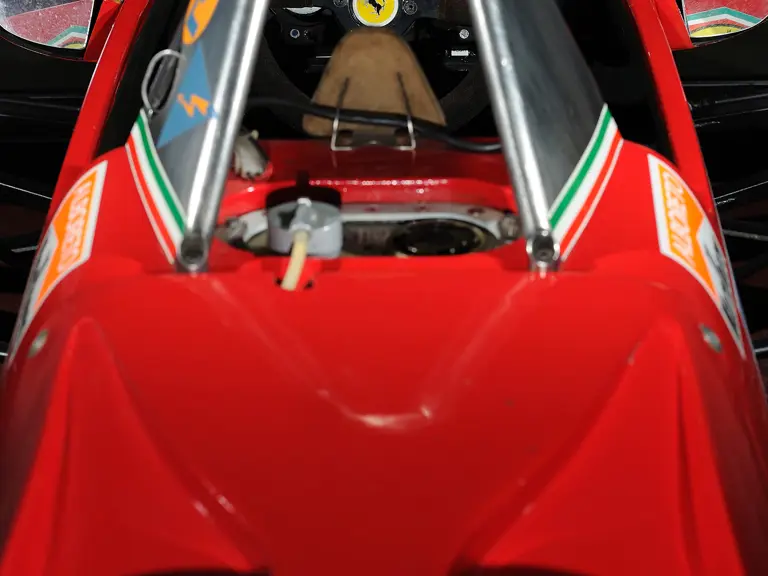
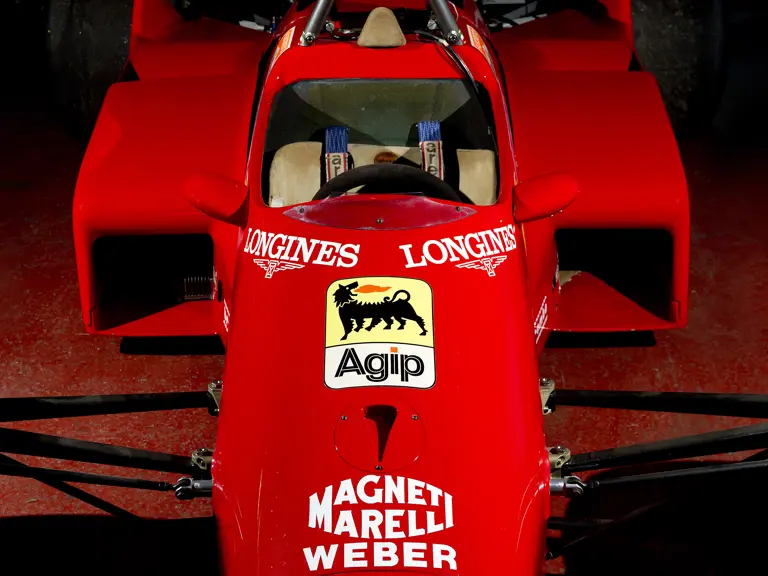
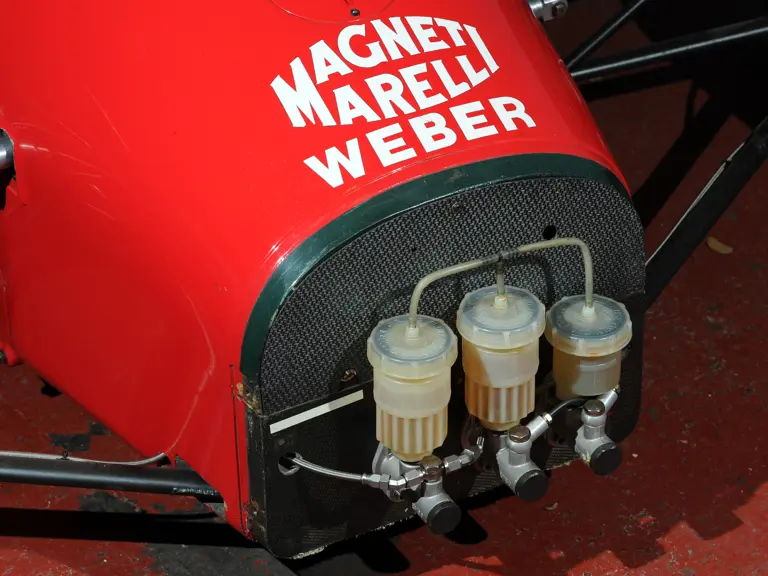
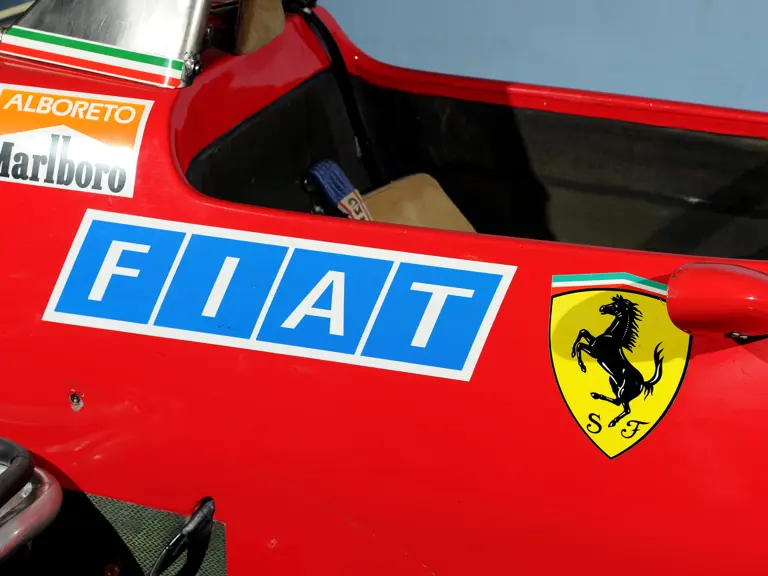
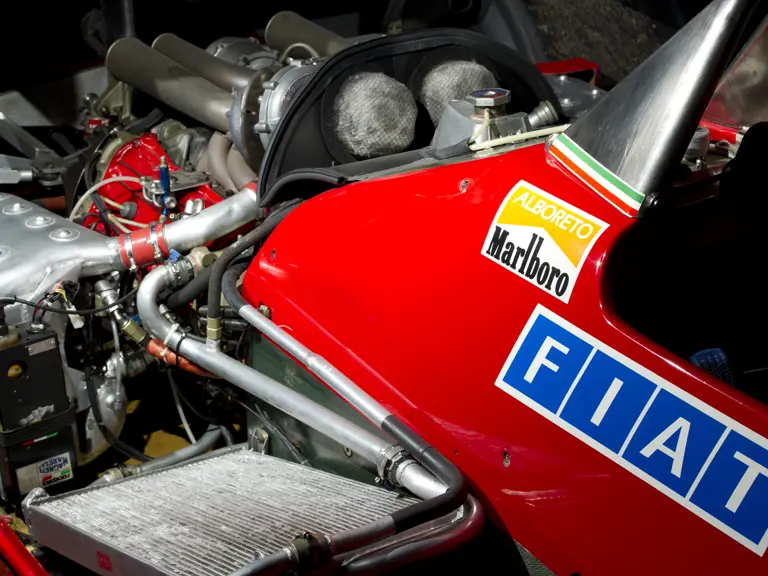
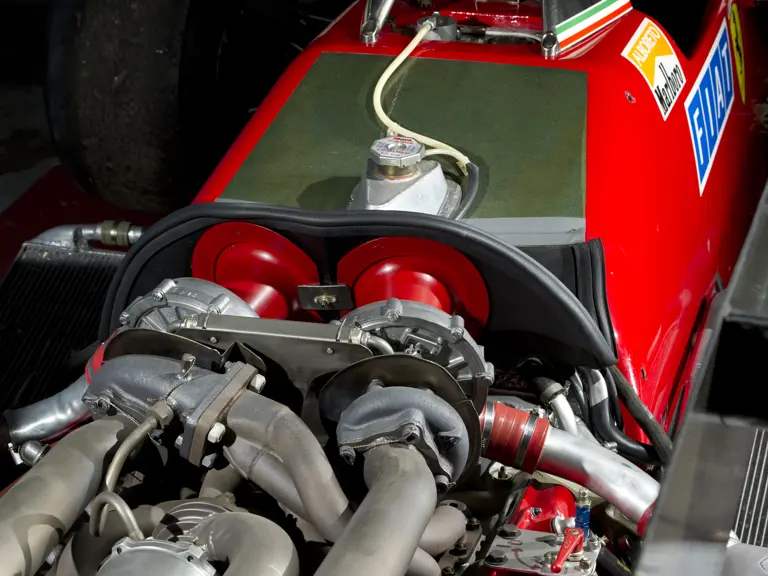

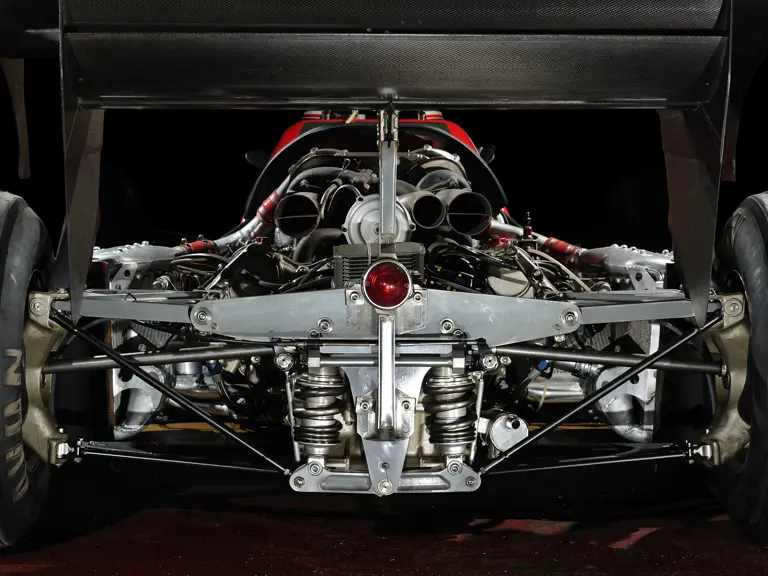

 | Monterey, California
| Monterey, California
